Hey everyone 👋🏻, in this blog we are going to discuss about :
- Arrow Functions V/S Regular Functions
- Advantages and Disadvantages of using Arrow Functions
Like I said in my previous blog, the arrow function is not a new concept, it is just a syntax revamp of the regular function in JS. The new syntax is very very easy, it is just a sugar coating around the old function syntax so without wasting anymore time let's start learning about arrow functions!
1. Arrow Functions V/S Regular Functions
We are going to discuss 4 different types of functions and we'll transform them from the old rusty ES5 syntax to ES6 syntax.
4 different types are going to be:
1. A named function with no parameters.
2. A named function with one parameter.
3. A named function with two parameters.
4. An unnamed function.
1. Named function with no parameters :
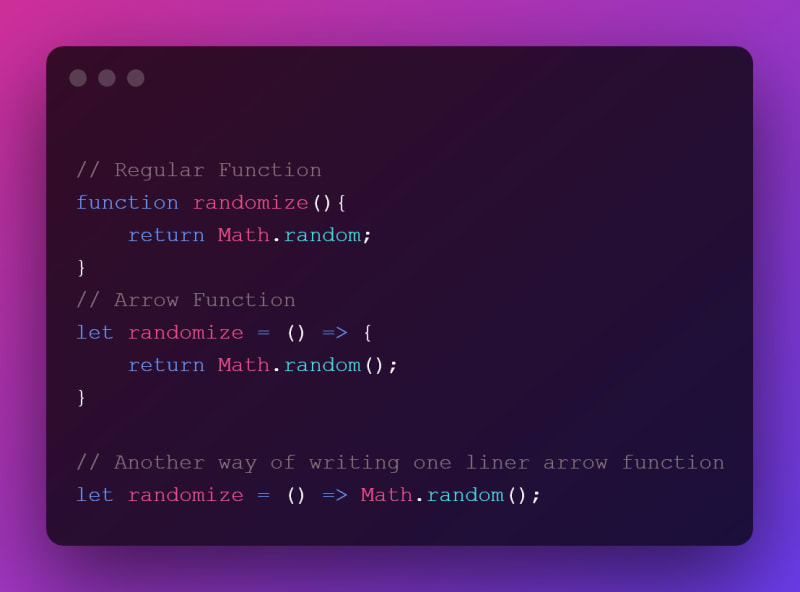
As you can see in the above photo, we have to give the name of the function as a variable name and after an equal symbol = an opening and closing parenthesis ( ) which will denote the function, leading with an arrow => which is nothing but an equal sign and angular bracket.
There is another way of making an one liner arrow function, you just have to give the function name as a variable name and = sign leading with => arrow and the statement you want to return.
2. Named function with one parameter :
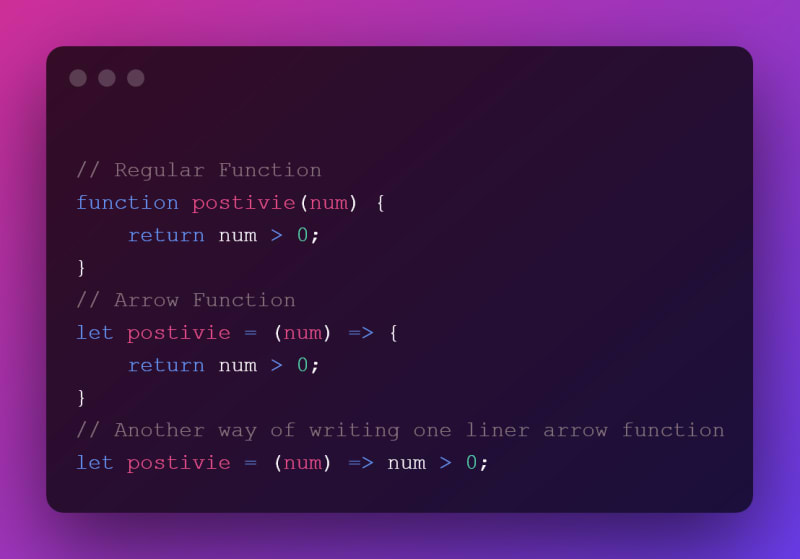
There is no change except in the parenthesis ( ) in which we will pass our parameters.
3. Named function with two parameters :
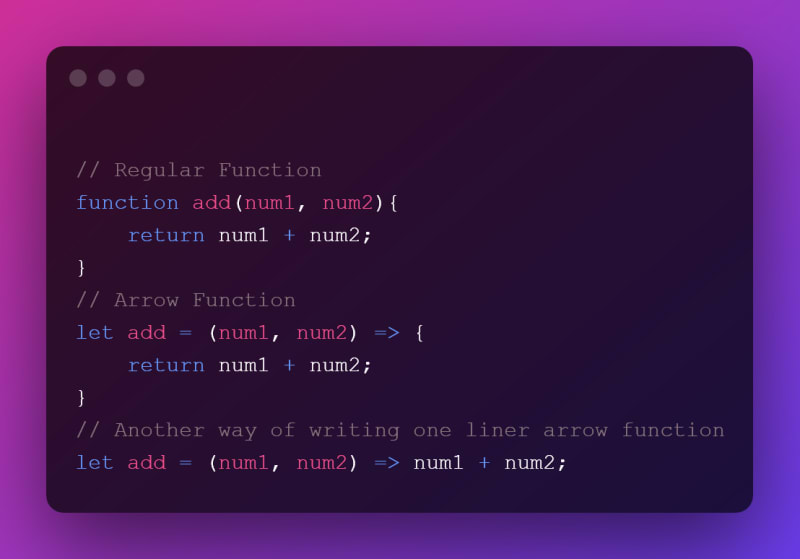
Isn't this cool??
2. Advantages and Disadvantages of using Arrow Functions
Arrow functions make our code more concise and increases the readability of the code, the new syntax is really easy to adopt and takes no time to understand things.
Apart from writing less and doing more Arrow Function can help us with this keyword and scoping of variables, let me show you how.
Here in this above image I have made a class with 2 member functions, arrow and regular which consists of setTimeout to make a block of code so that we can see the scope of this keyword using arrow functions v/s regular function.
Here we will receive the name(Shreyas) and age(18) in the arrow function, as inside this function
thiskeyword will use the scope where it was created ( i.e. inside the class ) but on the other hand the regular function will use the scope where it is invoked or called i.e. which is outside the class and since there is no name and age defined outside the class, we will receiveundefined.
One disadvantage I feel is, we can not use arrow function to define constructor.
A constructor is a special function which is to be made inside every class, which basically sets default values and initializes them.
In the above example you can see I have made a constructor function, but with normal function's syntax.
Thank you so much for reading the whole blog 🎉! I hope you learnt something and if you did, do implement it, it would make your code more concise and readable.

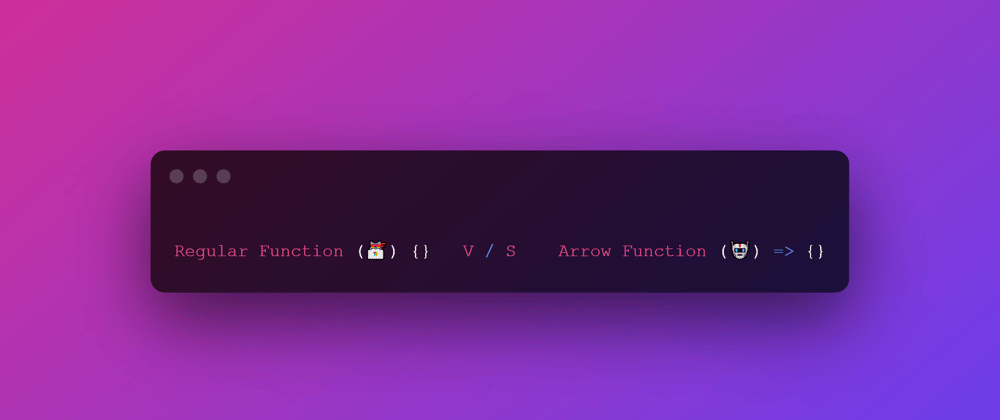
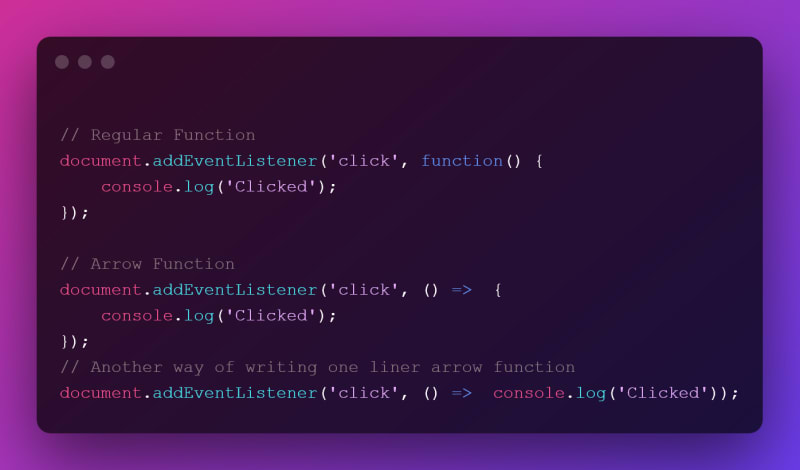
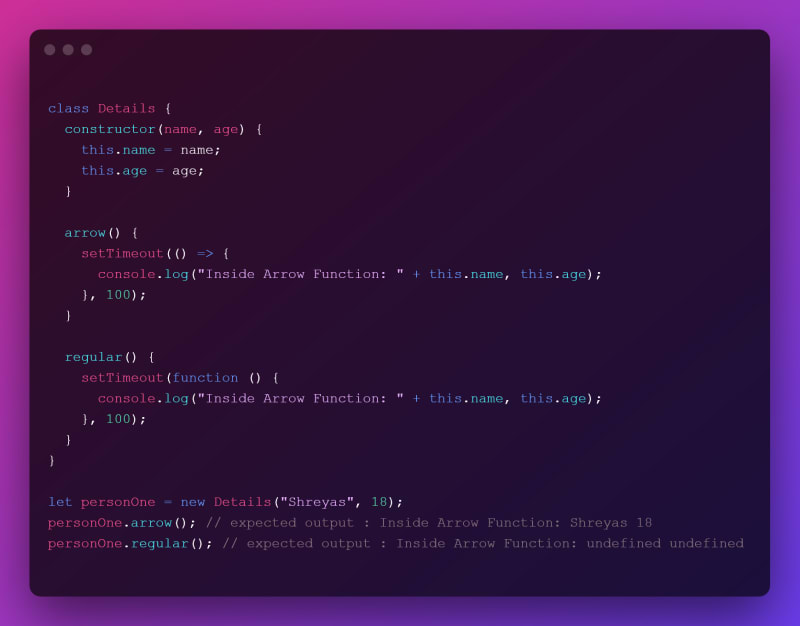





Top comments (3)
There are other disadvantages:
So only use arrow functions in classes when there is a very good reason to (i.e. to avoid having to use bind anyway).
Classes often use arrow functions as reusable event listeners. However EventTarget.addEventListener() can also accept objects as listeners as long as they implement EventListener.handleEvent().
React's synthetic event system doesn't support object event listeners however object event listeners can be used via useEffect().
Technically arrow functions cannot be named.
All that is happening here is that an anonymous function expression is bound to a variable name. To get a named function expression:
What is the difference?
In the following the locally available function name
fibRecis used:With arrow functions the variable name
fnfrom the creating scope has to be used:Contrast this with a function declaration which cannot be unnamed.
The advantage of a function declaration is that it is hoisted to the top of the scope. This works:
This does not work:
This doesn't work either:
While
var calculateis hoisted, the assignment isn't.As vice versa, we cant achieve call, apply with arrow function.
Yup, that's true!